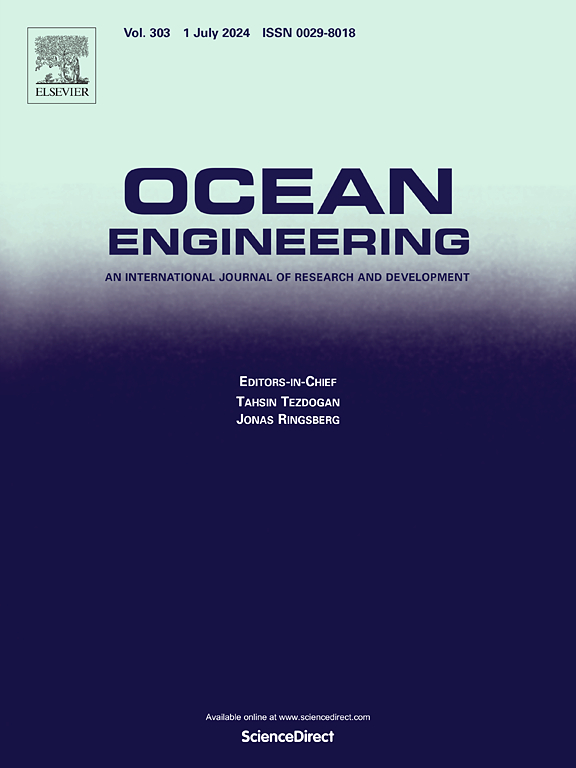滩面滋养下的体波爬升特性
IF 5.5
2区 工程技术
Q1 ENGINEERING, CIVIL
引用次数: 0
摘要
本文通过物理实验和相分辨数值模型SWASH相结合的方法,研究了人工沙洲营养海滩上波浪的上升行为。研究了波浪上升与营养海滩形态变化之间的动力相互作用。结果表明,人工沙洲的存在并不一定能减少波浪的上升。在特定的风暴波条件下,营养海滩上的上升能量可以超过自然(未受干扰)海滩,特别是在低频和中频波段。正如一阶共振频率估计所证实的那样,这归因于波浪能量向较低频率和人工沙洲与海岸线之间的共振转移。频率分量的时间分析表明,人工沙坝的波峰水深和向海坡度的变化显著地调节了总、低和高频上升,尽管高频冲刷在整个形态演化过程中仍占主导地位。现有的海浪上升的经验参数化,主要是为自然海滩开发的,与模型结果进行了评估。虽然达成了合理的共识,但他们往往忽视了淹没特征和特定条件下助跑的饱和行为的影响。通过在修正公式中加入无量纲的波峰水深,提高了涨落预测的准确性,证明了其在不断变化的营养海滩上快速预测波浪涨落的潜在用途。本文章由计算机程序翻译,如有差异,请以英文原文为准。
Characteristics of bulk wave run-up on shoreface-nourished beach
This study investigates wave run-up behaviour on nourished beaches with an artificial sandbar through a combination of physical experiments and phase-resolving numerical model SWASH. The research focuses on the dynamic interactions between wave run-up and morphological changes of the nourished beach. Results show that the presence of an artificial sandbar does not always reduce wave run-up. Under specific storm wave conditions, run-up energy on the nourished beach can exceed that on the natural (undisturbed) beach, particularly in low- and mid-frequency bands. This is attributed to wave energy shifting toward lower frequencies and resonances between the artificial sandbar and shoreline, as confirmed by first-order resonant frequency estimations. Temporal analysis of frequency components reveals that variations in crest water depth and seaward slope of the artificial sandbar significantly modulate total, low-, and high-frequency run-up, although high-frequency swash remains dominant throughout the morphological evolution. Existing empirical parameterizations for wave run-up, primarily developed for natural beaches, were evaluated against model results. While reasonable agreements are achieved, they tend to overlook the effects of submerged features and the saturation behaviour of run-up under specific conditions. The run-up prediction accuracy is improved by incorporating the dimensionless crest water depth in the modified formula, demonstrating its potential use for fast predictions of wave run-up on evolving nourished beaches.
求助全文
通过发布文献求助,成功后即可免费获取论文全文。
去求助
来源期刊

Ocean Engineering
工程技术-工程:大洋
CiteScore
7.30
自引率
34.00%
发文量
2379
审稿时长
8.1 months
期刊介绍:
Ocean Engineering provides a medium for the publication of original research and development work in the field of ocean engineering. Ocean Engineering seeks papers in the following topics.
 求助内容:
求助内容: 应助结果提醒方式:
应助结果提醒方式:


